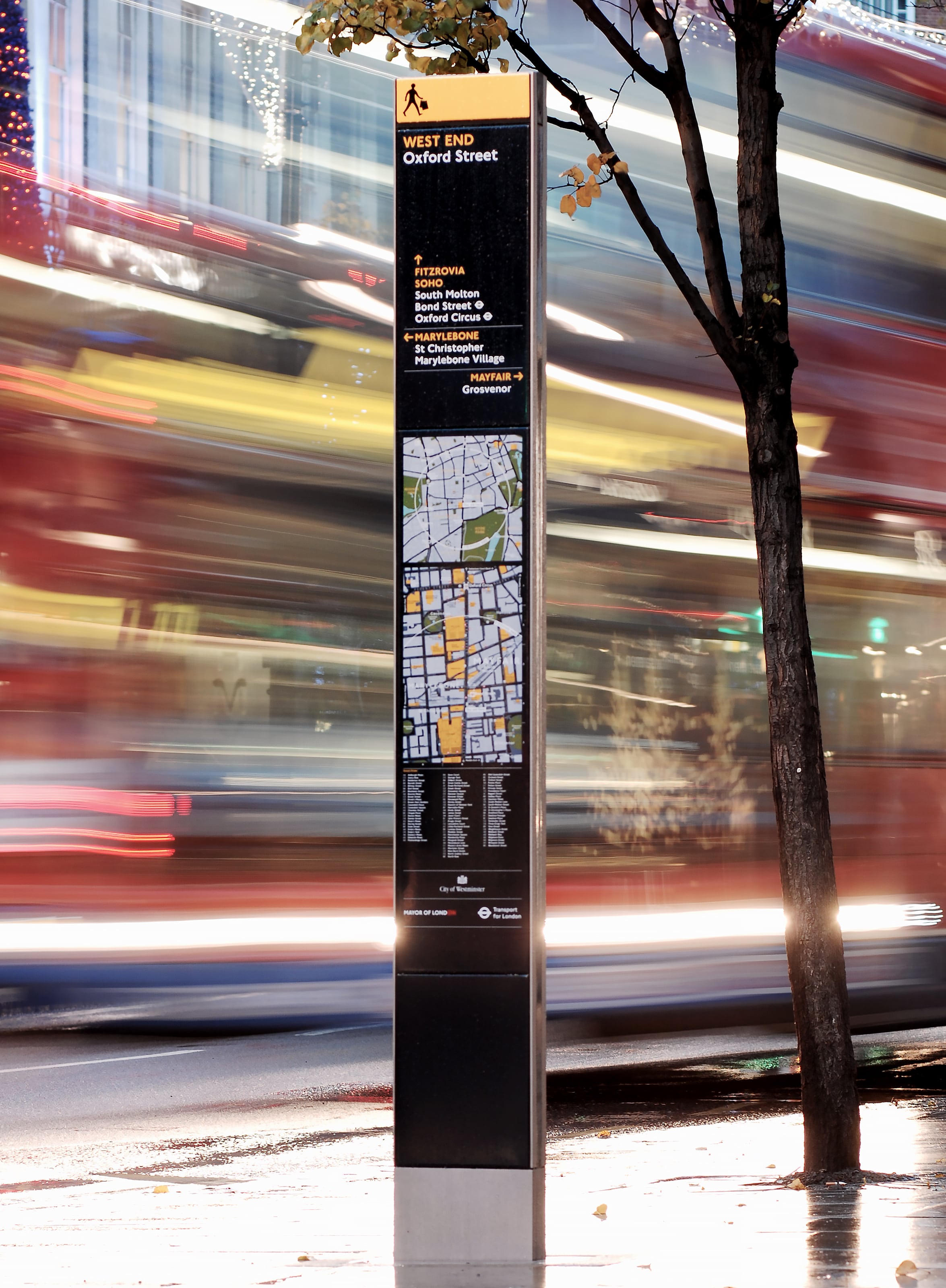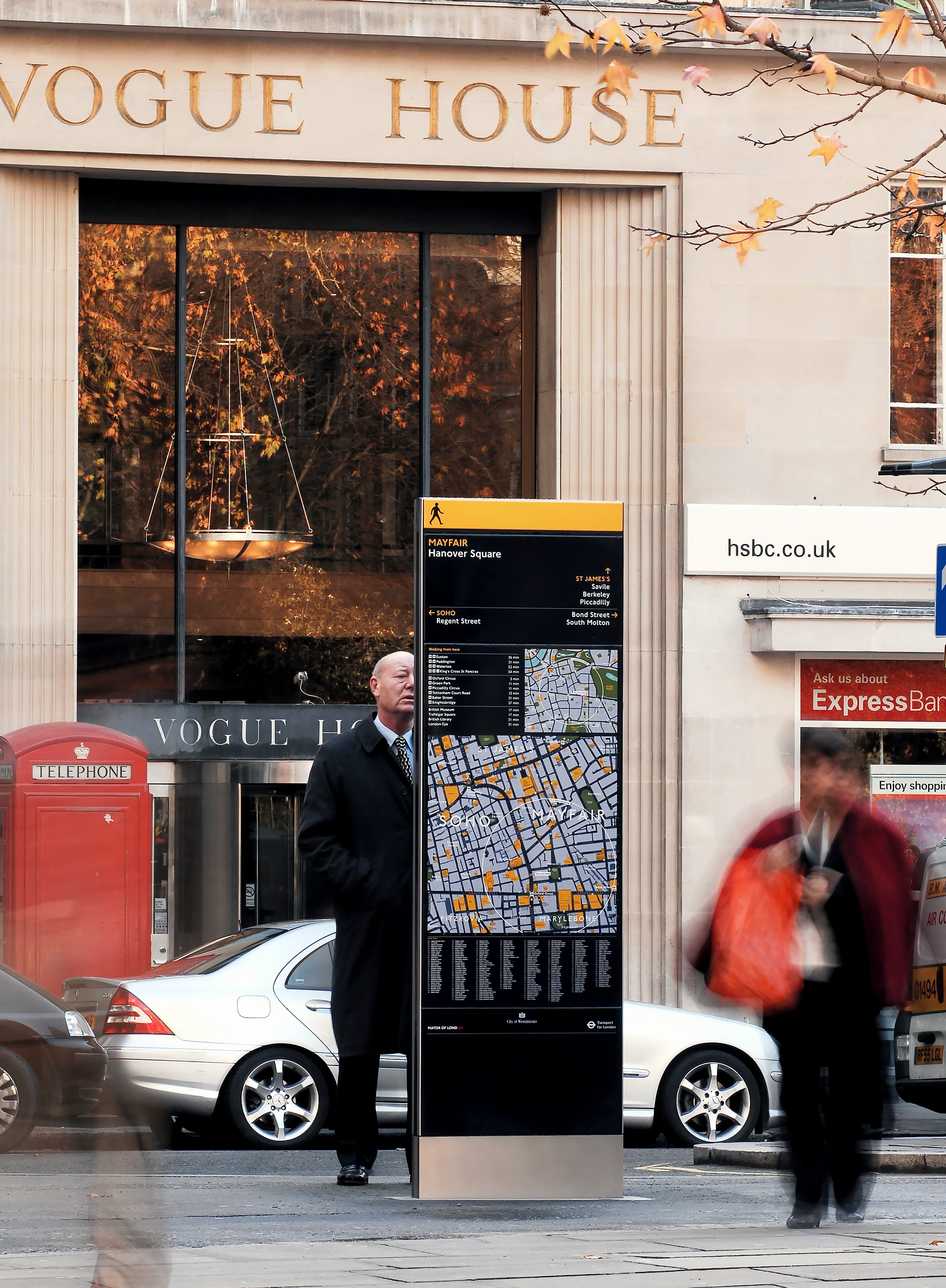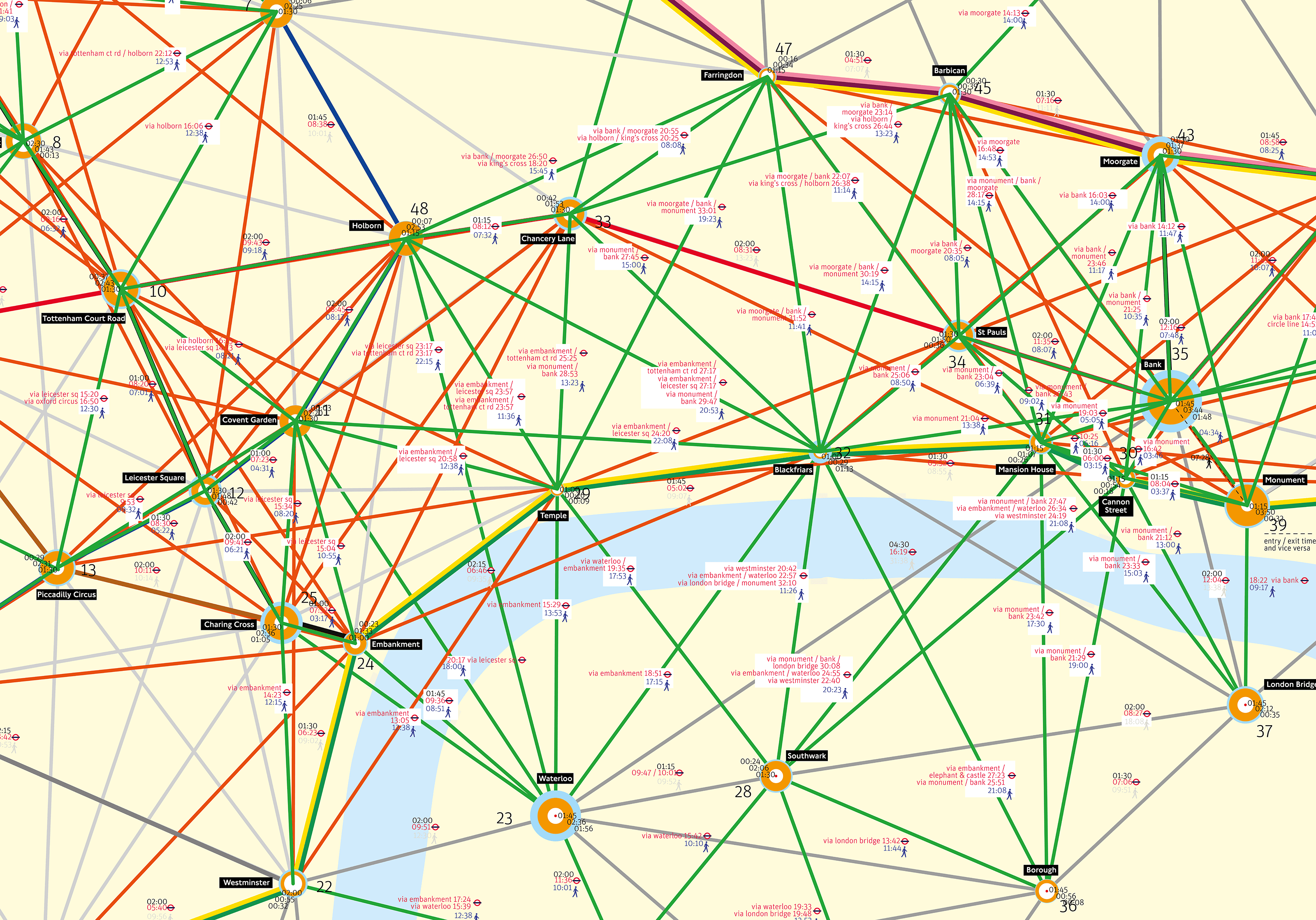
Legible London is a seminal project in the history of city wayfinding. It has influenced the last two decades of city wayfinding systems, largely defining the sign typologies, content criteria, information architecture and graphic cues used by many subsequent city systems.
In addition to its impact on public awareness, its real innovation has been as a catalyst to integrate wayfinding across the city. It was built on a programme of stakeholder consultation, based on core logics.
The system has been extensively tested and reviewed and has more proven impact than any other system.
measurable increase in walking
decrease in people feeling lost
time-saving improvement for pedestrian journeys
increase in user knowledge of local area context
Legible London
A comprehensive system of over 1500 signs throughout London, now covering the majority of London’s 32 boroughs. Street signs are placed in carefully selected locations to provide awareness and connectivity.


Multi modes and media
From the very outset, the system was created to connect to all of London’s transport modes. The system appears inside tube stations, on bus shelters, cycle hire, digital screens and on printed items.

Complement to the tube map
Research showed that 45% of people were using the tube map to navigate above ground. The Legible London map system is designed to complement and take over from the tube map when walking.





Concept of a legible system
The original vision of a connected system that tackles Londoners’ and visitors’ perceptions, giving them the awareness, confidence and ability to go where they want.


Walking faster than the tube
The system is based on thorough research of movement flows and facts. The Walking Tube study found that 55% of central London journeys were quicker to walk than travel by tube.

London’s addressing system
What might not be initially obvious is a system built around London’s ‘villages’. These were undefined, and a process to clarify and agree them was needed.

Consensus building
No city can develop a system in isolation. Gathering opinion, aligning agendas and sourcing funding takes effort and activity. The prototype development stage was delivered with a collaborative client group of six organisations.

What tools do you use?

